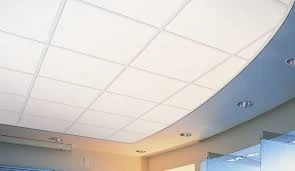- Afrikaans
- Albanian
- Amharic
- Arabic
- Armenian
- Azerbaijani
- Basque
- Belarusian
- Bengali
- Bosnian
- Bulgarian
- Catalan
- Cebuano
- Corsican
- Croatian
- Czech
- Danish
- Dutch
- English
- Esperanto
- Estonian
- French
- German
- Greek
- Hindi
- Indonesian
- irish
- Italian
- Japanese
- Korean
- Lao
- Malay
- Myanmar
- Norwegian
- Norwegian
- Polish
- Portuguese
- Romanian
- Russian
- Serbian
- Spanish
- Swedish
- Thai
- Turkish
- Ukrainian
- Uzbek
- Vietnamese
Лис . 16, 2024 22:37 Back to list
rated ceiling access panels
The Importance of Rated Ceiling Access Panels
Access panels are integral components of modern architectural and construction practices, serving to provide convenient entry points for maintenance and inspection of concealed systems within ceilings, walls, and floors. Particularly, rated ceiling access panels have gained prominence due to their ability to meet specific fire-resistance requirements while enhancing the functionality and safety of buildings.
Understanding Rated Ceiling Access Panels
Rated ceiling access panels are specially designed to comply with fire ratings that correspond to the structural and safety standards set by local building codes. These panels are manufactured with materials that can withstand high temperatures, thereby preventing the spread of fire from one compartment to another. Typically, they are rated for fire resistance for periods such as 1-hour or 2-hours, indicating the duration they can maintain their integrity in the event of a fire.
Applications in Construction
In commercial and institutional buildings like hospitals, schools, and office complexes, the use of rated ceiling access panels is crucial. These locations often have various concealed utilities, including electrical conduits, plumbing, heating, ventilation, and air conditioning (HVAC) systems. Rated panels facilitate easy access for maintenance personnel without compromising the building's fire safety measures. This ease of access is vital for regular inspections and repairs, ensuring that these systems operate efficiently, safely, and within the required compliance guidelines.
Benefits of Using Rated Ceiling Access Panels
1. Safety Compliance One of the primary benefits of rated access panels is their compliance with fire safety regulations. Installing these panels assures building owners and occupants that they are adhering to safety standards put in place to protect lives and property in emergencies.
2. Convenience and Accessibility Rated ceiling access panels are designed to be easily opened and closed. This feature allows for quick access during inspections and maintenance, reducing the downtime of systems that may require immediate attention.
rated ceiling access panels

3. Aesthetic Integration Modern rated access panels are designed with aesthetics in mind. They can be seamlessly integrated into the existing ceiling structure, maintaining the overall visual appeal of the space without detracting from architectural designs.
4. Durability Constructed with high-quality materials, rated ceiling access panels are built to withstand wear and tear, providing a long-lasting solution for building maintenance needs.
5. Cost-Effectiveness While the initial investment in rated panels may be higher than standard options, their durability and the potential for reducing future repair costs can make them a more cost-effective choice over time.
Choosing the Right Rated Ceiling Access Panels
When selecting rated ceiling access panels, it is essential to consider several factors
- Fire Rating Ensure the panel meets the required fire ratings as per the building classification. - Size Choose panels that are adequately sized for the intended access use. - Material Panels should be constructed from fire-resistant materials, such as steel or gypsum, depending on specific needs. - Installation Proper installation is crucial to maintain the fire-resistant properties of the panels. Engaging certified professionals for installation is advisable.
Conclusion
Rated ceiling access panels play a vital role in balancing functionality, safety, and aesthetics in contemporary building design. Their significance goes beyond mere accessibility; they are critical elements in ensuring compliance with fire safety standards, which ultimately protect the occupants and the structural integrity of the building. By investing in high-quality rated ceiling access panels, property owners can ensure they are making a safe and conscientious choice for their construction needs. As regulations evolve and safety standards become more stringent, the importance of such components will undoubtedly continue to rise in the construction industry.
-
PVC Laminated Gypsum Ceiling Board OverviewNewsApr.11,2025
-
Mineral Fiber Ceiling Tiles Price Analysis and ComparisonsNewsApr.11,2025
-
Crafts of Mineral Fiber Ceiling Tile ManufacturingNewsApr.11,2025
-
Difference Between Gypsum and PVC CeilingNewsApr.11,2025
-
An Overview of Mineral Fiber Ceiling TilesNewsApr.11,2025
-
Advantages of PVC Gypsum CeilingNewsApr.08,2025







